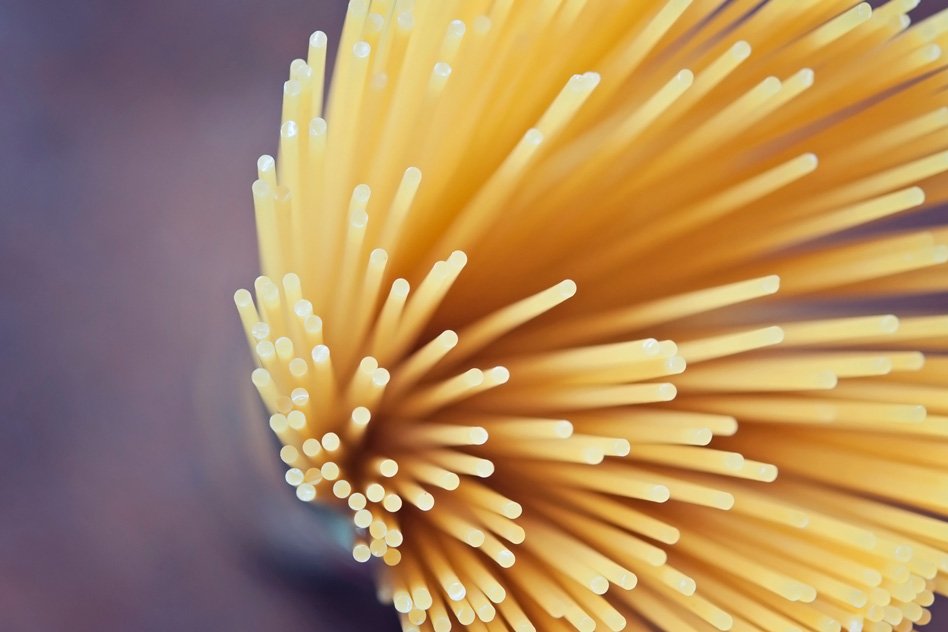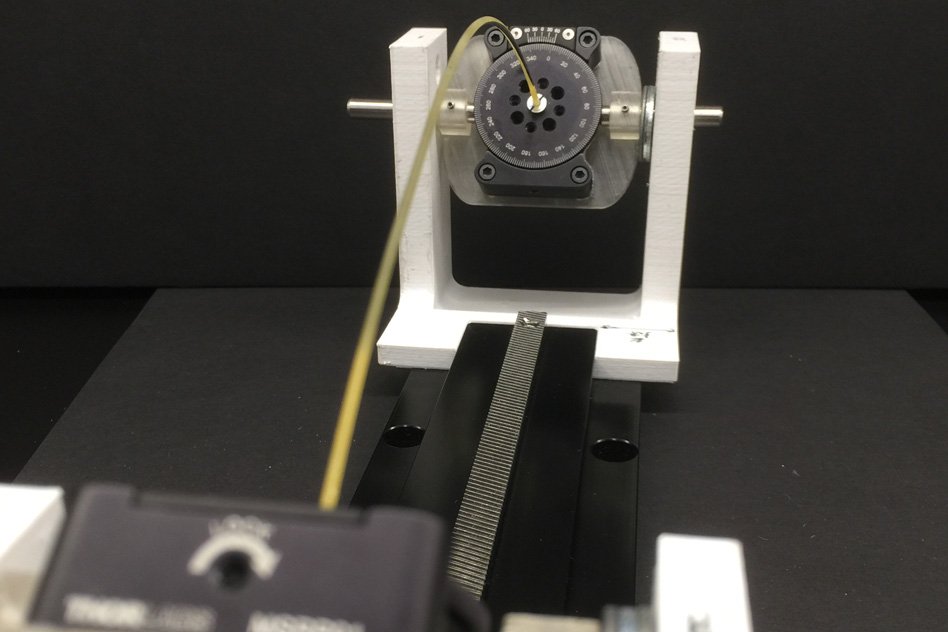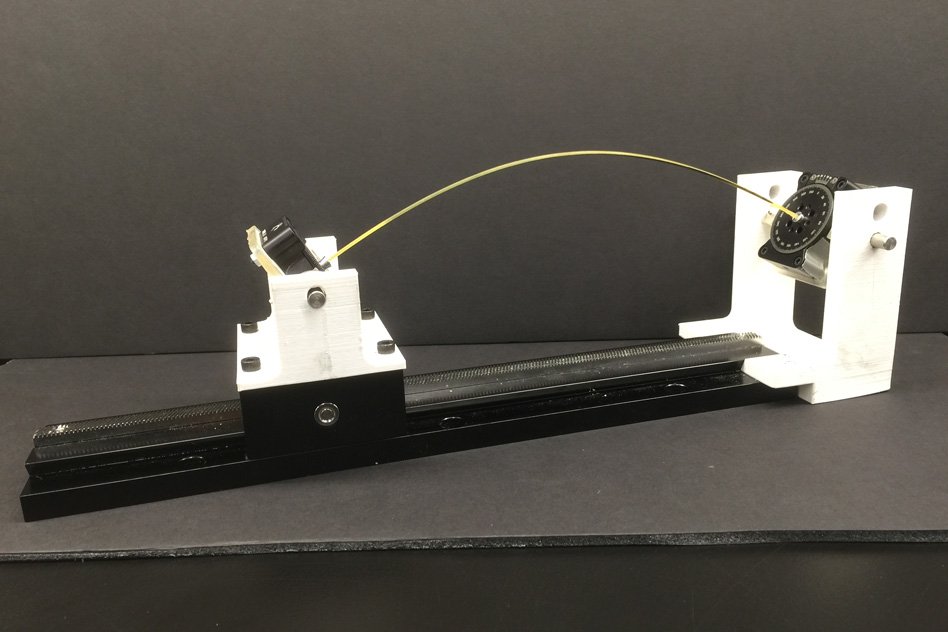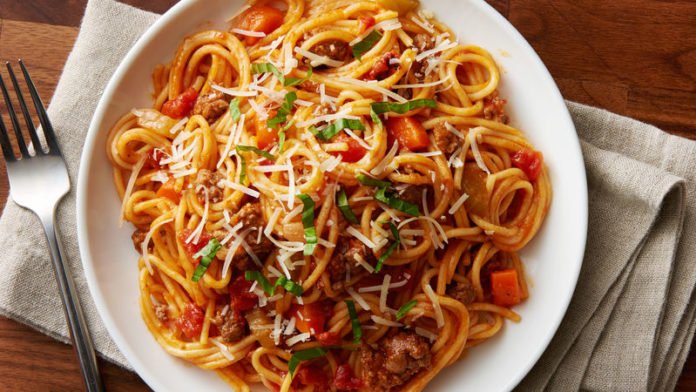Spaghetti a staple food of traditional Italian cuisine. Like other pasta, spaghetti is made of milled wheat and water and sometimes enriched with vitamins and minerals. Authentic Italian spaghetti is made from durum wheat semolina, but elsewhere, it may be made with other kinds of flour.
Dry spaghetti noodles aren’t difficult to break, but it’s nearly impossible to break them into only two pieces. Often, snapping them in two would result in three or more fragments.

Courtesy of the researchers.
Physicist Richard Feynman ’39 who once spent a good portion of an evening breaking spaghetti and looking for a theoretical explanation for why the sticks refused to snap in two.
After several years, he theorizes that breaking any long, thin rod, such as a spaghetti stick, will break near the center when broken evenly at either end. This produces a “snap-back effect” that fractures the stick even further.
In a new study by MIT, scientists reported that they have demonstrated a way to break spaghetti in two by both bending and twisting the dry noodles. They have built an apparatus through which it is possible to break the spaghetti in two.

Courtesy of the researchers.
Scientists noted, “The results may have applications beyond culinary curiosities, such as enhancing the understanding of crack formation and how to control fractures in other rod-like materials such as multifiber structures, engineered nanotubes, or even microtubules in cells.”
Originally, the apparatus is a mechanical fracture device that controllably twists and bend spaghetti sticks. Two clamps on either end of the device hold a spaghetti stick in place. A clamp at one end can be rotated to twist the dry noodle by various degrees while the other clamp slides toward the twisting clamp to bring the two ends of the spaghetti together, bending the stick.

Courtesy of the researchers.
Two students build the device are Ronald Heisser ’16, now a graduate student at Cornell University, and Vishal Patil, a mathematics graduate student in Dunkel’s group at MIT. Heisser, together with project partner Edgar Gridello, originally took up the challenge of breaking spaghetti in the spring of 2015, as a final project for 18.354 (Nonlinear Dynamics: Continuum Systems), a course taught by Dunkel. They had read about Feynman’s kitchen experiment and wondered whether spaghetti could somehow be broken in two and whether this split could be controlled.
In the end, they found that by first twisting the spaghetti at almost 360 degrees, then slowly bringing the two clamps together to bend it, the stick snapped exactly in two.
Additionally, Patil developed a mathematical model to explain how twisting can snap a stick in two. For this, he studied the “snap-back effect,” in which a secondary wave caused by a stick’s initial break creates additional fractures, causing spaghetti to snap in three or more fragments.
Gathering the data, he added an element for twisting and observed how twists should impact any forces and waves propagating through a stick as it is bent.
His model lets him know that if a 10-inch-long spaghetti stick is first twisted by about 270 degrees and then bent, it will snap in two, mainly due to two effects. The first is snap-back, and the second is twist-back, where the stick will essentially unwind to its original straightened configuration release energy from the rod, preventing additional fractures.
Dunkel explained, “Once it breaks, you still have a snap-back because the rod wants to be straight. But it also doesn’t want to be twisted.”
“Just as the snap-back will create a bending wave, in which the stick will wobble back and forth, the unwinding generates a “twist wave,” where the stick essentially corkscrews back and forth until it comes to rest. The twist wave travels faster than the bending wave, dissipating energy so that additional critical stress accumulations, which might cause subsequent fractures, do not occur.”
The team found that the theoretical predictions of when a thin stick would snap in two pieces, versus three or four matched with their experimental observations.
The study is published in Proceedings of the National Academy of Sciences. Other co-authors of the study include Norbert Stoop, instructor of mathematics at MIT, and Emmanuel Villermaux of Université Aix Marseille.
